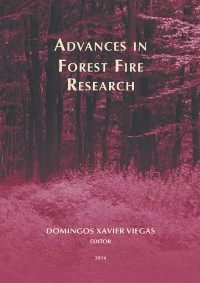Please use this identifier to cite or link to this item:
https://hdl.handle.net/10316.2/34074| DC Field | Value | Language |
|---|---|---|
| dc.contributor.author | Libonati, Renata | |
| dc.contributor.author | DaCamara, Carlos C. | |
| dc.contributor.author | Setzer, Alberto W. | |
| dc.contributor.author | Morelli, Fabiano | |
| dc.contributor.author | Jesus, Silvia C. de | |
| dc.contributor.author | Candido, Pietro A. | |
| dc.contributor.author | Melchiori, Arturo E. | |
| dc.date.accessioned | 2014-10-20T10:56:44Z | |
| dc.date.accessioned | 2020-09-09T21:31:50Z | - |
| dc.date.available | 2014-10-20T10:56:44Z | |
| dc.date.available | 2020-09-09T21:31:50Z | - |
| dc.date.issued | 2014 | - |
| dc.identifier.isbn | 978-989-26-0884-6 (PDF) | |
| dc.identifier.uri | https://hdl.handle.net/10316.2/34074 | - |
| dc.description.abstract | This work presents an automated regional algorithm that allows detecting burned areas in Brazil based on information from TERRA/AQUA MODIS data. The procedure relies on the so-called W burning index, that requires daily reflectance from the 1km MODIS Level 1B calibrated radiance from bands 2 (near infrared) and 20 (middle infrared). Burned pixels are first identified as those located in the neighbourhood of active fires and associated to values of W and temporal changes in W larger than a fixed threshold. Pixels in the neighbourhood of the previously identified ones are then tested as burned ones based on contextual tests performed on associated values of W and temporal changes in W. Validation of results was performed over Cerrado region using high resolution burned area maps derived from Landsat imagery, paying special attention to the omission and commission errors. For comparison, validation of NASA/MODIS burned area products MCD45A1 and MCD64A1 is also carried out over the same area. Results from the new algorithm present considerably lower omission error when compared to NASA/MODIS products. The two NASA products present very low commission errors (ranging from 2 to 10%) but they are affected by very high occurrence of omission errors (greater than 60% in almost all cases analysed). The new product has larger commission errors (ranging from 20 to 40%) but a large fraction of those (more than 40%) occur at the borders of the scars and may therefore not be strictly viewed as false alarms; there is also a clear reduction of the omission cases (below 40% in all cases). | eng |
| dc.language.iso | eng | - |
| dc.publisher | Imprensa da Universidade de Coimbra | por |
| dc.relation.ispartof | http://hdl.handle.net/10316.2/34013 | por |
| dc.rights | open access | - |
| dc.subject | Burned areas | eng |
| dc.subject | MODIS | eng |
| dc.subject | Remote sensing | eng |
| dc.title | Validation of the burned area “(V,W)” Modis algorithm in Brazil | por |
| dc.type | bookPart | por |
| uc.publication.firstPage | 1774 | - |
| uc.publication.lastPage | 1785 | - |
| uc.publication.location | Coimbra | por |
| dc.identifier.doi | 10.14195/978-989-26-0884-6_197 | - |
| uc.publication.section | Chapter 6 – Forest Management | por |
| uc.publication.digCollection | PB | por |
| uc.publication.orderno | 197 | - |
| uc.publication.area | Ciências da Engenharia e Tecnologias | por |
| uc.publication.bookTitle | Advances in forest fire research | - |
| uc.publication.manifest | https://dl.uc.pt/json/iiif/10316.2/34074/211699/manifest?manifest=/json/iiif/10316.2/34074/211699/manifest | - |
| uc.publication.thumbnail | https://dl.uc.pt/retrieve/11176032 | - |
| uc.publication.parentItemId | 53868 | - |
| uc.itemId | 70364 | - |
| item.grantfulltext | open | - |
| item.fulltext | With Fulltext | - |
| Appears in Collections: | Advances in forest fire research | |
Files in This Item:
| File | Description | Size | Format | |
|---|---|---|---|---|
| 978-989-26-0884-6_197.pdf | 2.05 MB | Adobe PDF |  |
Items in DSpace are protected by copyright, with all rights reserved, unless otherwise indicated.
